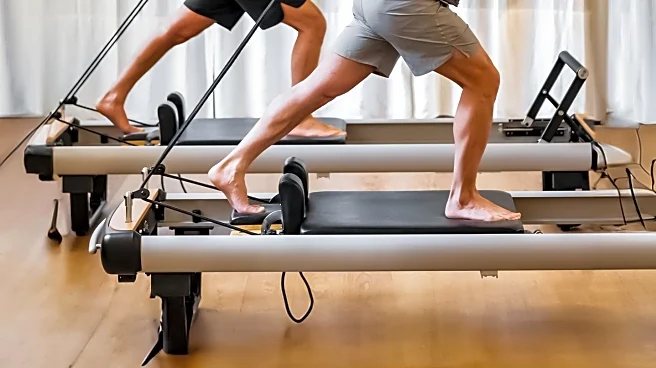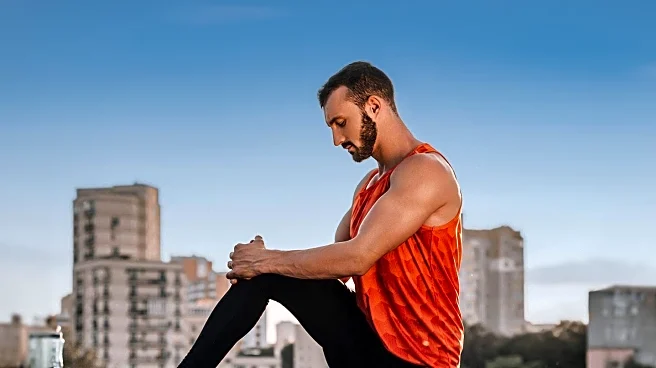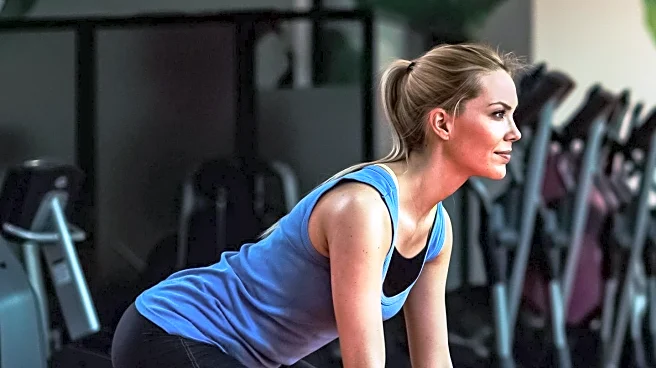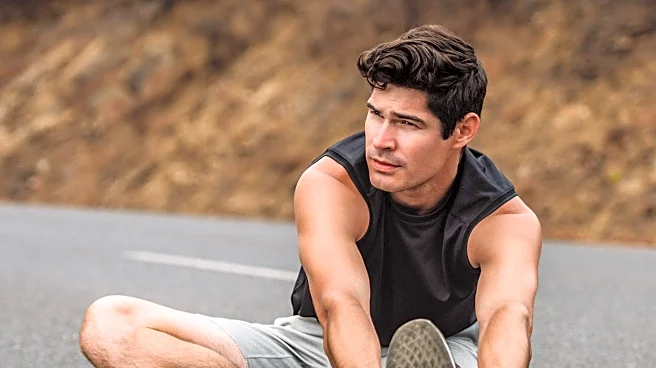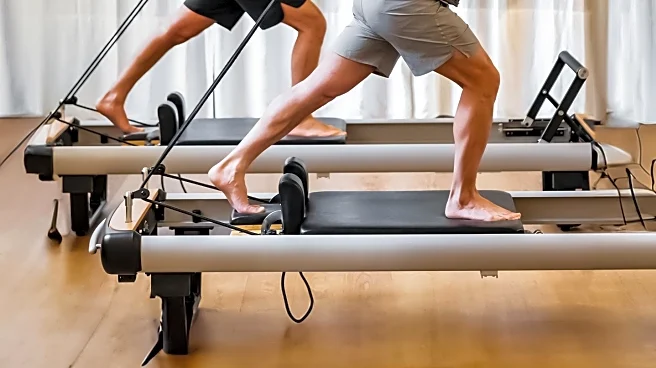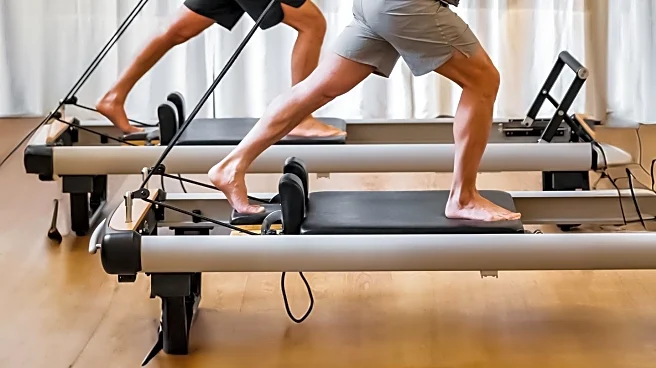What is the story about?
What's Happening?
Mallory Fox, a NASM-certified personal trainer, emphasizes the importance of stretching after walking to prevent muscle stiffness and soreness. Fox suggests that even lower-impact activities like walking can lead to muscle stiffness, and incorporating a stretching routine can aid in recovery and performance. She recommends three types of stretches: static calf stretch, active hip flexor stretch, and dynamic hamstring stretch. These stretches are designed to improve flexibility, reduce muscle stiffness, and prevent injuries by maintaining muscle and tendon elasticity.
Why It's Important?
Stretching after walking is crucial for maintaining muscle health and preventing injuries. It helps in cooling down the body, improving flexibility, and reducing physical stress. For regular walkers, especially those who engage in long or intense walks, stretching can enhance recovery and overall performance. This practice is beneficial for mental wellbeing and physical health, as it helps maintain the elasticity of muscles and tendons, reducing the risk of soreness and stiffness.
What's Next?
Walkers are encouraged to incorporate these stretches into their routine to enhance recovery and performance. Listening to one's body and adjusting the stretching routine based on individual fitness levels and goals can optimize benefits. As more people become aware of the importance of post-walk stretching, it may lead to a broader adoption of these practices in fitness regimens.
Beyond the Headlines
The emphasis on stretching highlights a growing awareness of the importance of recovery in fitness routines. As people increasingly focus on holistic health, practices like stretching are gaining recognition for their role in enhancing physical and mental wellbeing. This shift may lead to more comprehensive fitness programs that prioritize recovery alongside exercise.
AI Generated Content
Do you find this article useful?


